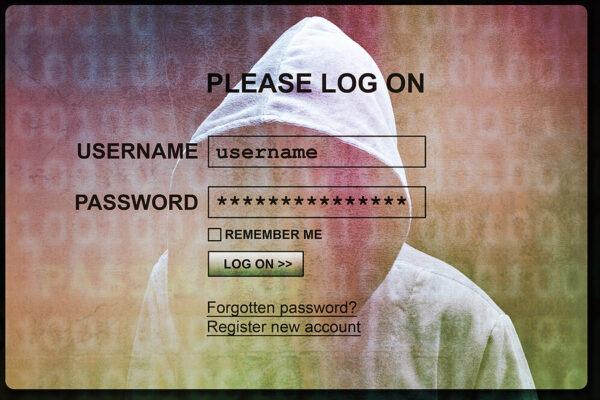One of the dangers of growth by merger is the corporate equivalent of indigestion. You may have eaten too much or the meal content doesn’t agree with you. The result is sluggish system that becomes too internally focused and loses both momentum and value.
It probably doesn’t help if the meal resists ingestion.
When Oracle finally acquired PeopleSoft in January this year after hostile takeover battle lasting 18 months, industry pundits labelled it marriage of convenience rather than mutual desire and predicted painful cultural clash between Oracle’s “survival of the fittest” management style and PeopleSoft’s more casual, paternalistic approach to employee welfare.
On top of that was the need to cope with the merger within its merger – PeopleSoft’s relatively recent acquisition of JD Edwards which, while much more amicable process, represented sizable meal still in the process of digestion.
Although Oracle is hardly new to the takeover game, PeopleSoft is by far its largest merger mouthful. Inevitably there was fallout in the companies’ combined human capital as Oracle cut duplication costs in sales and back-office staff, announcing 5000 layoffs barely week after the deal was completed.
Not good start you might think – but six months down the track Oracle executives were buzzing through Australasia on PR offensive that emphasised how the restructured company is “bringing together the best and the brightest” to help define the new game in applications technology.
It’s all to do with consolidating customer base and leveraging each other’s strengths both in terms of product offerings and markets, Oracle president Charles Phillips explains. Inevitably upbeat about future development under the company’s new “project fusion” banner, he told Management that the takeover equivalent of swallowing an elephant has provided critical mass with minimal discomfort.
So what has been its recipe for merger success?
Clear strategy and speedy action
Critical aspects for success, according to Phillips, are having clear strategy and taking quick, decisive action.
In terms of background, Oracle decided few years back that it would be driver of consolidation in the fairly fragmented software industry. Companies ripe for the plucking are those that can add critical mass in terms of customer base, provide industry specific expansion (eg, retail industry model Retek) or local opportunities in the form of organisations that help expand its footprint in particular geographic regions.
In keeping with its acquisition strategy, Oracle developed an operational model around core central team based out of its corporate HQ in California and four geographic centres. It also invested heavily in centralised back office system which cut about US$2 billion worth of cost out of the company and helps cut the costs and disruption of new acquisitions.
“We don’t have regional systems or financials in different countries. We have one system so when we make acquisitions, their employees and financials get leveraged in at no additional cost,” says Phillips.
One advantage of the legal marathon preceding PeopleSoft’s takeover is that it provided time to prepare merger strategy.
“We had 18 months to plan for this so we kinda knew what we wanted to do and had processes in place,” says Phillips. “Within 30 days we had offers out to the people we wanted to keep, we had the structure sized and account management issues resolved – everyone knew who they were reporting to. So at the end of that time, we had the new organisation in place.
“The goal for us was to make sure we got it done quickly and provided clarity for employers, customers and partners. The worst thing we could have done was study the whole thing for another month to try and get it perfect. You’re never going to get it perfect.
“But we had enough time to prepare and we got most of the decisions right with very few readjustments of what we’d originally set up. So we’re really pleased with how it’s worked.”
Speed was key success factor, agrees Brian Mitchell, Oracle’s vice president of mergers and acquisitions in Asia Pacific.
“After witnessing the PeopleSoft acquisition of JD Edwards, one conclusion we rapidly came to was that the pace was too slow. That was major problem. When we acquired the company and asked the people involved about the integration process – what went right and what went wrong – they all said ‘we spent too long on it’. So I think speed was of the essence.”
Another vital aspect of the process was the focus on customer retention.
“If you don’t prioritise that as number one – the thing from which everything else flows – then you’ve lost the reason for spending all that money,” says Mitchell. “So I think we bent over backwards in being very clear with customers about the level of our commitment on [product] support.”
This process involved an outreach programme that saw Oracle executives calling large numbers of PeopleSoft and JD Edwards customers to ask about their concerns and what they’d like to see happen. Communication with customers has to be carried out continually and on multiple levels – user groups proved good conduit for conveying strategy and getting to grips with user issues, says Mitchell. series of roadshows (such as the one that brought Oracle executives to Sydney last month) are part of the communication equation.
“You can never over-communicate,” says Mitchell.
That applies both externally and internally.
Culture and communication
Getting employees from two different organisational cultures working on the same page was not the big problem it was made out to be, says Phillips. For starters, he says, the culture at PeopleSoft was just as aggressive and competitive as at Oracle – although it didn’t present as such.
“I call that one of their great marketing feats. The reality is that they were just as aggressive as we were in trying to be number one.
“When you’re in competitive industry, you hire people who believe in competing. And if you’re successful, that means that is the type of people you have. There’s reason [PeopleSoft] did as well as they did.
“Why they were able to fight us off for so long and still sell software is because they are hyper-competitive and we knew that because we work with them every day in the marketplace and they’ve been tough competitor of ours for long time.”
The two companies are also based in the same area and various personnel have migrated between them over the years, says Phillips.
“What we found was that firstly there were some people we already knew from previous encounters but secondly that once we got on the same page, we started working pretty much the way we’ve always worked and it’s very similar.
“When you take set of engineers from one background and set from background where they’re used to doing things slightly differently then they’re going to think of new ideas they wouldn’t have thought of separately. And that’s happened in every functional area. We’ve learned from them and they’ve learned from us.”
It helps if you have common enemy on which to focus – and in the enterprise software world, that is SAP.
“At the first meeting when I talked to employees, I said the one thing that is going to unify us is the goal of being number one and that is what should be driving us. So the more time we spend looking at each other or debating each other, the less time we are spending competing with SAP,” says Phillips.
The focus is on external competition and what gets everyone excited is delivering the new generation of applications that will make Oracle number one, he adds.
“It’s always good to have hill to take, clear objective and in this case we have clear enemy and clear objective.”
Those who do well in the merged company are those who do well. Phillips notes that Oracle has “always been merit-based organisation” where people who are good at what they do get rewarded, no matter where they came from and what their title is. Anyone











